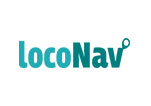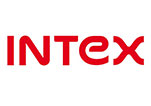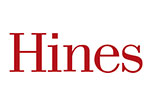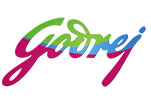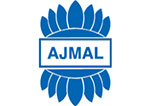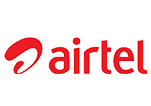AIRNAS - Air Navigation & System (Simulation)
Get the Best Air Navigation and System Software Solutions
On an airport, several activities go unnoticed in the hustle. But these activities play an essential role in the smooth functioning of the airport. This includes tasks such as flight movements, flight code, type of aircraft, the departure and arrival of flights, and much more is done based on the Airport Operational Database (AODB). The solutions which aid in the implementation, management, and other tasks based on the airport database are Air Navigation and System Software Solutions. However, it’s to be taken care that AODB is not an operation, but the backbone of all other services.
FREE CONSULTATION
What are the features of Best Air Navigation and System Software Solutions?
Several companies provide air navigation and system software solutions. These companies have a varied range of products based on air navigation and system software. These products offer different functions of their own. A product might have the ability to security check the passengers while they enter the airport. On the other hand, a product could be used to manage the luggage.
However, here’s a list of the standard solutions that are used in airports are:
- Facial-recognition and biometric ID management:
As the name suggests, this software is used to check the biometric ID, such as face recognition, iris recognition, etc.
- Passenger self-service solutions:
Airports these days are looking for solutions that would make the process go quicker than before. Therefore, they are introducing self-service solutions for passengers, which would include automated boarding gates, baggage drop and tracking, mobile integration, etc.
- Cyber Security:
Cybersecurity is emerging as an essential field of investment. Most of the airports are trying to educate the staff about cybersecurity to prevent cyber-attacks and stay safe. Some other areas in which airports these days are interested in investing in are telecommunication, threat Intelligence, and network security.
- Artificial intelligence and predictive analytics:
Almost 80% of the airports are already using Artificial intelligence and predictive Analytics for the improvement of customer service. Most of the airports use virtual assistants or chatbots for customer satisfaction and advertisement purposes.
- Airport operations solution:
Arena software development focuses on providing solutions for various airport operations. These operations include third party management, automated invoice, billing system, etc.
- Ground handling solutions:
The solutions cover most of the functions which are carried on the ground. It may include features such as luggage management or checking in and checking out of passengers, board pass management, and modules for staff management and task assignments.
- Some other features that come under the category are:
- Airport Flight Information Display
- Airport Landing Dues Information System (ALDIS)
- Cash Invoicing System
- Air Traffic Control and Administration System
- Real-Time Apron Management System
- ATC Over Flight Billing System
- Fuel System
- Handling Agent System
- Ledger Accounting
- Reports System
Why choose us?
We, Planet PCI Infotech Ltd, are globally the number one service provider. We specialize in providing varied Human Resource Consulting services. We specialize in integrated solutions that are modified as per the business needs of our client(s) across the world.
We own subsidiary companies/branch offices in countries like Germany, USA, Hongkong, Russia (Moscow), Dubai, and Nigeria. We believe delivering quality services at an economic level so that it gives a client high with utmost customer satisfaction.
AIRNAS is a multidisciplinary integrated framework based on CAD / GIS techniques, satellites orbital positioning and electromagnetic signal propagation analysis capable of concurrently dealing with design and validation problems related to:
• All phases of Air operation (en-route, landing, missed approach, departure)
• The various tasks involved in system choices and performance evaluation of navaids both conventional and GNSS.
Testimonials
What our customers say



“Planet PCI’s Document Management System has completely changed the way we work. We now keep all our information in electronic form rather than the traditional method of papers. This has helped us in two ways – first, we do not have to go through hoard of papers to find one document; and, second, it has reduced storage space. They provide an amazing feature of document retrieval, so we don’t have to worry about our documents being stolen.”



“Planet PCI provided us with a fantastic selection of templates, backgrounds, themes, and scenes. Their design support interactive elements like links and rich media. Their graphic designers were very helpful and professional. They understood our requirements very well. The final product was up to our expectations. They used topography and pictures to meet our needs. They were successful in communicating ideas that inspire, inform and captivate consumers. We recommend Planet PCI to everyone.”



“We are a big multinational company and keeping records of all the employees was not so easy. We went to Planet PCI and asked for their help. They came up with an innovative concept called Document Management Services. My God! It has completely changed the way we work. It has reduced storage space and at the same time, increased security. Happy with their work, we also went for a web portal and creative solutions.”
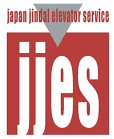


“The Budget Monitoring System of Planet PCI has helped us to automate the process of expenditure monitoring, budget monitoring, and money allocation. This system can look after all the financial needs of our organization. They have also helped us in managing our purchases with their Procurement Management System. This has helped us in eliminating processing costs, missed documents, and slow approval cycle. Moreover, it is error-free.”



“Planet PCI has helped us in our inventory management. They helped us in tracking inventory levels, sales, orders, and deliverables. It also helps in producing other production-related documents. Impressed by their service, we also asked them to help us with our Payroll and Production. We have to admit that they provide exceptional services. Their team will try to understand your problem and provide the best possible solution. They will never leave you disappointed.”



“We took their help in developing a system that can help us in providing better road traffic services. And we have to say, these people are the best. They developed a system that makes sure that our customers have safe and efficient travel. It has eliminated the need for paperwork. They have also decreased the time required to detect defects. Overall, it has led to increased customer satisfaction, decreased expenses and improved efficiency.”
FREQUENTLY ASKED QUESTIONS
FAQs
What is Air Navigation and Airport System?
AIRNAS is a multi disciplinary integrated design environment (Framework) based on CAD and simulation techniques capable of concurrently dealing with problems related to: the different phases of air navigation design (e.g.: en-route, landing, missed approach, etc.) the various tasks involved in system choices and performance evaluation of Navaid and ATC systems.
What is AIRNAS composed of?
AIRNAS is composed of an aeronautical Data Base, a GIS (compliant with aeronautical requirements), a 3D CAD (fully integrated to the GIS), a module library implementing the ICAO-PANS-OPS design criteria and a library of electromagnetic simulation tools. AIRNAS is conceived to be capable of assisting both the AIS designer and the Navaid-ATM/ATC designer.
How come at some airports there is a mismatch between arrival times on your website and the information on an airline’s website?
Although we try to gather the arrival times from the airlines directly, at times this is not available and we provide the information based on time of landing on the runway. Because some airports are quite large, there may be a time difference between landing on the runway and the time it takes to taxi to the gate.
How inaccurate can the location of your flight tracking be?
This depends on a case by case basis. Thought most of our flights are very accurate, there are cases where the accuracy may be within a few kilometer or sometimes the accuracy can be up to a hundred kilometer.
What is the altitude based on? Above Ground Level or Main Sea Level?
We do not provide AGL altitudes and the displayed altitudes are different, depending on the data source. The position data can come from many different types of altitude data. This includes pressure altitude (corrected and uncorrected) the flight level or a height based on GPS above MSL. When we receive data from FAA and other air navigation sources it is usually MSL.
Achievements
Our Achievements
11+ Years
of experience
300+ Experts
of technology
1000+ Softwares
delivered to clients
CMMI Level 3 Years
dev company
Value Shore
outsourcing modal
800+ Clients
worldwide
Clientele
Our Awesome Clientele


















